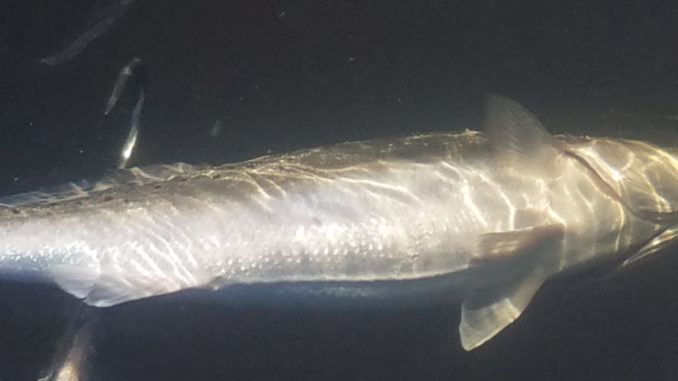
North Carolina’s closure for specks lasts until June 15
A fisheries biologist with the N.C. Division of Marine Fisheries expects to receive reports of cold-stun kills of speckled trout and other species through the end of January, and he thinks it will be several months before the “full effect” of the early January weather event is understood.
Steve Poland, the lead speckled trout biologist for the NCDMF, said a proclamation issued by Steve Murphey, the newly appointed director of NCDMF, that closed the season on spotted seatrout, effective Jan. 5 and lasting until June 15, was certainly justified and could help the species recover. He said DMF is still receiving reports of fish stuns and kills, and the results might be worse than expected.
“We received stun and kill reports from Currituck County to Brunswick County,” Poland said. “We couldn’t confirm the Brunswick County report but have confirmed cold-kill incidents from Surf City northward. At this point, we have eight confirmed cold-stun incidents and some cover large areas. The reports have slowed, but I won’t be surprised to continue receiving reports through the end of the month, and it will be spring before we understand the full effect.
“These new reports won’t all be new incidents, but some will be cases where fishermen get into new areas and find fish that had already sank to the bottom and now deteriorated enough to rise back to the surface and float where they are seen.
“This isn’t good, but thankfully, trout are surprisingly resilient, and they should rebound well,” Poland said. “This is a big event, and it may take several years to fully recover. The closure runs into the prime spawning time to give those mature trout that survived time to spawn several times before the season reopens and they can be removed from the water. Mature trout can spawn every six to seven days once the water warms. Their usual spawning period is from mid- to late April until October and peaks in mid- to late June. Hopefully, we will see a lot of spike trout next fall.”
Past protocol for closing trout seasons required DMF staff to observe catastrophic kills in four or more counties, but there wasn’t a set standard of what was catastrophic. There is still the provision for DMF staff to observe reported kills, but there are established quantative triggers and temperature triggers, and all were exceeded.
In the past, the closure has always included the entire coast, but partial closures are possible now that the coast has been divided into northern, central and southern regions. There was no debate on closing the northern and central regions, as most of the kills were there, but Surf City is in the southern region and the severe kills there triggered the southern region closure.
Full details on the NCDMF Cold Stun/Kill protocol can be found at http://portal.ncdenr.org/web/mf/cold-stun-facts.




Be the first to comment